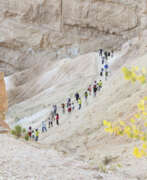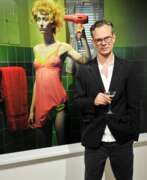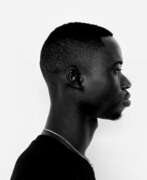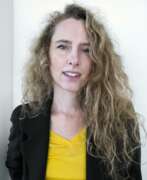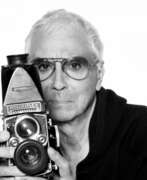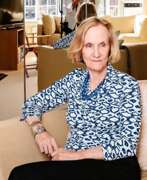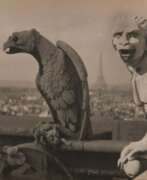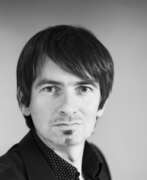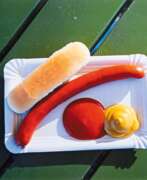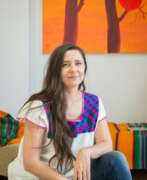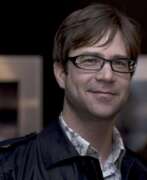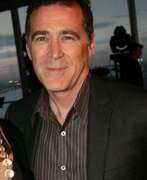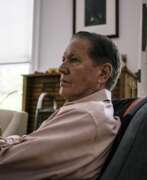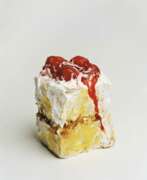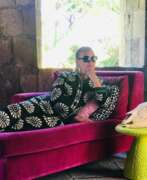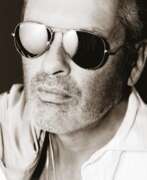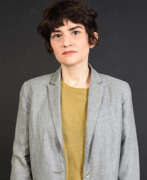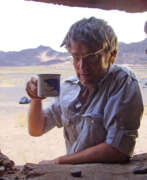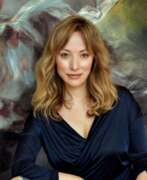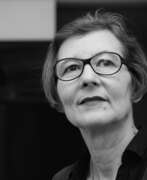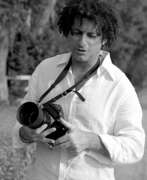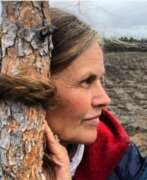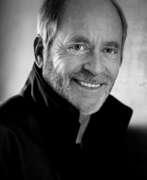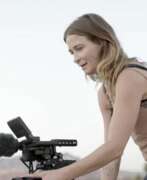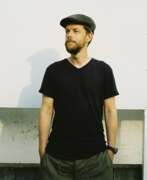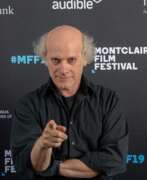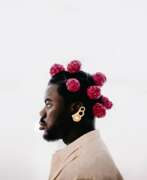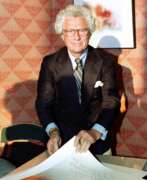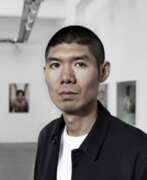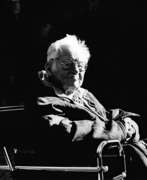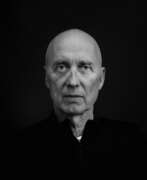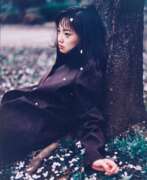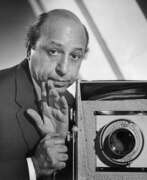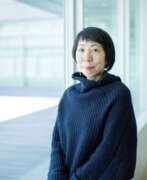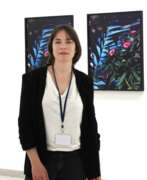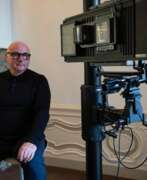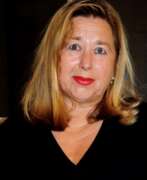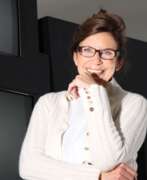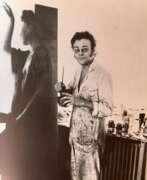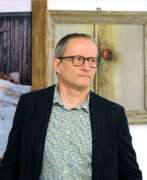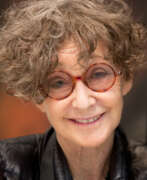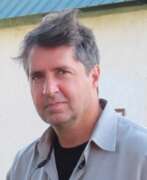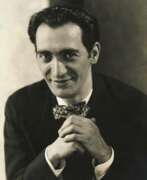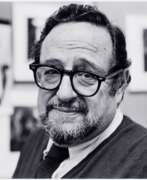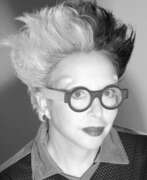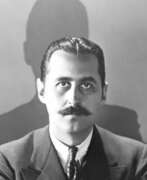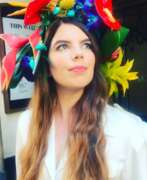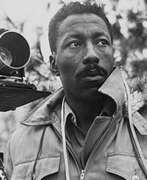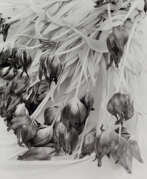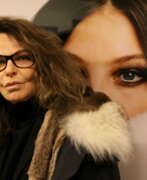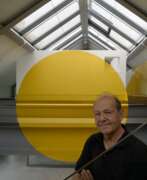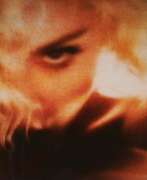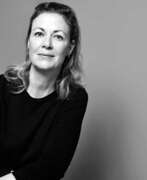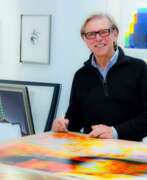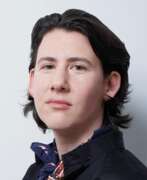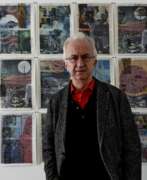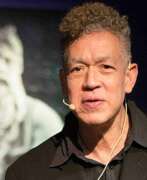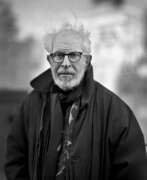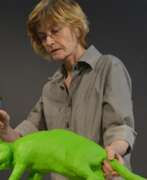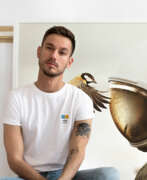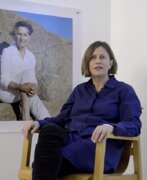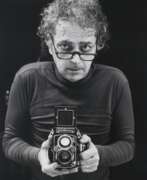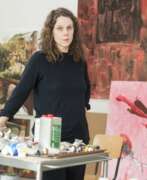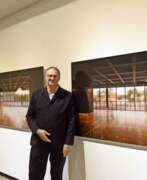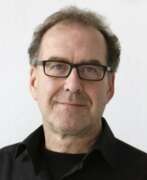Artists Color photo
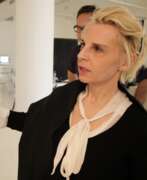

Valérie Belin is a French art photographer. She lives and works in Paris.
Her work takes the form of photographic series. In the 2000s she started using digital post-production tools which gave her greater freedom to change and control the chromatic values of the prints. She now produced her first series in colour. In 2009 Belin began to use other kinds of digital manipulation, heightening the hybrid, graphic and artificial dimension of her work. These include solarisation and overprinting. Since then, she has also worked with other abstract vectorial forms, like digital "readymades" found on the internet, which she reworks on the computer, melding them with her images.
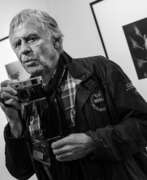

Dieter Blum is a contemporary German photographer who has worked for well-known and influential publications (German magazines Spiegel and Stern, American Time, Vanity Fair). At the beginning of his career he took pictures of American cowboys, now he prefers to work with musicians and ballet dancers.
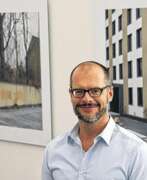

Oliver Boberg is a German artist, working with photography and video, whose work has been exhibited internationally. Mainly reflecting on the process of creating and recalling memories, Boberg's works are in the collections of institutions such as the Victoria & Albert Museum ( London, England) and the Museum of Modern Art (New York, NY).
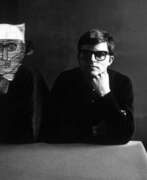

Guy Bourdin was a French photographer and artist who is best known for his innovative and provocative fashion photography in the mid-20th century. He was began his career as a painter before turning to photography.
Bourdin's photographic style was characterized by his use of bold colors, surreal imagery, and provocative themes. He often incorporated elements of eroticism and violence into his work, challenging traditional ideas about beauty and femininity.
Bourdin's photographs were widely published in fashion magazines such as Vogue, and he became known for his collaborations with fashion designers such as Charles Jourdan and Issey Miyake. His work was highly influential, and he is considered one of the most important fashion photographers of the 20th century.
Bourdin's legacy as an artist and photographer continues to inspire new generations of artists. His innovative techniques and bold aesthetic continue to push the boundaries of fashion photography and have had a significant impact on contemporary art and culture.
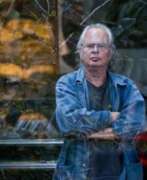

Miguel Rio Branco, full name Miguel da Silva Paranhos do Rio Branco, is a Brazilian photographer, artist, director and creator of multimedia installations.
His father was a diplomat and as a child Miguel lived in Spain, Portugal, Switzerland and the USA, now living and working in Rio de Janeiro, Brazil. After earning a degree in photography from the New York Institute of Photography, Miguel first worked as a cameraman and then worked with the Magnum agency. Miguel is known for exploring and crossing two different art forms: painting and photography. He has also shot 14 short films and eight long films, he is recognized in the world as one of the best color photojournalists.
Miguel Rio Branco's photographs are part of the collections of the Museum of Modern Art and the Metropolitan Museum of Art in New York.
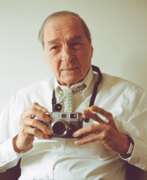

William Eggleston is an American photographer. He is widely credited with increasing recognition for color photography as a legitimate artistic medium. Eggleston's books include William Eggleston's Guide (1976) and The Democratic Forest (1989).
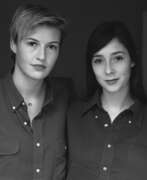

Elsa and Johanna are a creative duo of photographic artists and filmmakers.
They were finalists for Prix HSBC pour la photographie 2016 and won the second Prix Picto de la mode 2017.
The duo's clients include well-known publications such as Le Temps, Boycott Magazine, L'Express 10, Crash Magazine, Etro, Boucheron and Apple.
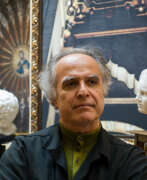

Ahmet Ertug is a Turkish architectural photographer and publisher.
He was trained as an architect at the Architectural School of the Architectural Association in London, but developed a passion for photography.
Researching traditional architecture in Japan, Ertug traveled extensively throughout the country and photographed ancient temples, Zen gardens, and traditional festivals. Ertug photographed many of Istanbul's architectural and archaeological structures with Ottoman, Roman and Catholic influences. He founded a publisher of fine art books, and his national fame increased dramatically when he began publishing his photographs in lavish art books. Since then, Ertug's publishing house has published more than 30 such collections. Ertug has also photographed extensively the famous American libraries.
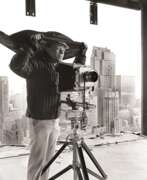

Ormond Gigli was an American photographer best known for his fashion and portrait photography. He was began his career as a freelance photographer in the 1940s, eventually becoming a staff photographer for several major publications, including LIFE, Time, and Harper's Bazaar.
Gigli's work is characterized by its striking use of color and composition, often featuring models in elaborate poses and settings. One of his most famous images is "Girls in the Windows," a photograph he took in 1960 of models posed in the windows of a Manhattan building slated for demolition.
Throughout his career, Gigli received numerous awards and accolades for his work, including the Lifetime Achievement Award from the American Society of Media Photographers in 2003. His photographs have been exhibited in galleries and museums around the world, and are held in the collections of many major institutions, including the Museum of Modern Art in New York and the National Portrait Gallery in Washington, D.C.
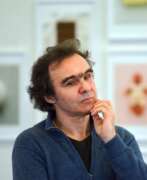

Klaus Goedicke is a contemporary German photographer, a disciple of Bernd Becher.
Klaus Goedicke creates straightforward, bright and impeccably composed still lifes. His specialty is object photography and his subject is consumer culture: plastic bottles, household items, food. Everything is photographed against a flat, colourful background to draw the viewer's attention to form. With its frontal straightness, glossy sheen and precise lighting, Gödicke's work is reminiscent of the visual language of advertising.
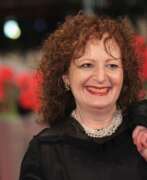

Nan Goldin is an acclaimed American photographer renowned for her profound visual narratives that delve into her personal world, marked by themes of addiction, sexuality, and intimate relationships. Born in Washington, D.C., in 1953, Goldin's journey into photography began in the early 1970s, capturing the lives of those around her, forming a "substitute family" amid a backdrop of drugs, sex, and violence.
One of Goldin's most celebrated works, "The Ballad of Sexual Dependency" (1986), is a raw and intimate portrayal of her "tribe," documenting their lives through the late 70s and early 80s in New York City. This work, initially presented as a slideshow, captures moments of love, sexuality, and domestic life, transcending into a poignant narrative of the era's challenges, particularly the AIDS crisis.
Throughout her career, Goldin's photography has continued to evolve, exploring various themes and mediums, including film. Her work, deeply personal and often autobiographical, challenges conventional perceptions of beauty, identity, and relationships, offering a window into the complexities of human connection and the essence of her subjects.
Goldin's influence extends beyond the art world, with her activism, particularly against the opioid crisis, marking another significant chapter in her journey. Her profound empathy and commitment to portraying the raw, unfiltered realities of life resonate through her extensive body of work, which continues to be celebrated in exhibitions and collections globally.
For art collectors and enthusiasts, Goldin's work offers not just aesthetic value but also deep emotional and historical resonance. To stay informed about Nan Goldin's works and related updates, signing up for newsletters from prominent galleries or her exhibitions could provide valuable insights and opportunities for engagement with her art.
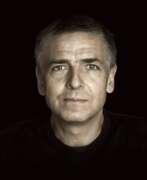

Andreas Gursky, a German photographer born in 1955, is renowned for his large format architectural and landscape color photographs, which often feature a high vantage point. Gursky's work has garnered attention for its unique perspective on modern life and contemporary scenes, capturing the grandeur and intricacy of his subjects with a meticulous eye for detail. His pieces, such as "Rhein II" and "99 Cent II Diptychon," showcase his skill in transforming ordinary locales into extraordinary visual narratives, often with the aid of digital manipulation to enhance and refine the final image.
Andreas Gursky's photography is celebrated for its ability to capture the essence of globalization and the human impact on the environment, presenting scenes that are both familiar and alien in their scope and detail. His work has been exhibited worldwide and is held in high esteem in the art market, with some of his pieces achieving record-breaking auction prices.
For art collectors and experts, Andreas Gursky's photographs offer a profound commentary on the world we live in, blending technical prowess with a deep conceptual framework. His exhibitions and publications provide insight into his creative process and the evolution of his artistic vision.
To stay updated on Andreas Gursky's latest exhibitions and works, consider subscribing to updates from renowned art galleries or institutions that feature contemporary photography.
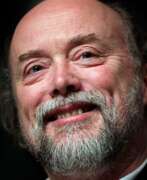

Bill Henson is an Australian photographer. He is known for his moody and atmospheric photographs of the human form, as well as landscapes and architectural interiors.
Henson began his career as a photographer in the 1970s and gained recognition in the 1980s for his moody and enigmatic images of teenagers. His work often explores themes of sexuality, desire, and the subconscious.
Throughout his career, Henson has continued to produce striking photographic works that push the boundaries of conventional portraiture and landscape photography. He has exhibited widely both in Australia and internationally and his work is included in the collections of many major museums, including the National Gallery of Australia, the Museum of Contemporary Art in Sydney, and the Solomon R. Guggenheim Museum in New York.
Henson has also been the recipient of numerous awards and honors for his photography, including the Centenary Medal from the Australian government in 2001 and the Officer of the Order of Australia in 2019.
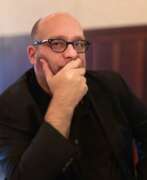

Todd Hido is an American photographer and artist. He is best known for his moody and atmospheric photographs of suburban landscapes and homes, which often convey a sense of loneliness and isolation.
Hido's photographic style is characterized by his use of muted colors, soft lighting, and blurred images. He often photographs interiors and exteriors of homes at night, creating a dreamlike and eerie mood. His work is also known for its cinematic quality, and many of his images evoke the mood of film noir.
Hido's work has been exhibited in galleries and museums around the world, and his photographs have been published in numerous books and magazines. He has received many awards for his work, including a fellowship from the National Endowment for the Arts.
Hido's legacy as an artist and photographer continues to influence new generations of photographers and artists. His moody and evocative style has had a significant impact on the field of contemporary photography and has helped to redefine the way that we think about suburban landscapes and the concept of home.
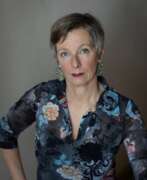

Elisabeth Hölzl is an Italian artist, sculptor and photographer who lives and works in Merano.
She studied art history in Innsbruck and then sculpture at the Academy of Fine Arts in Bologna. In the 1990s Elisabeth presented minimalist sculptures and installations to the public, later her work moved away from matter and turned to other media such as glass and light. In these works the focus is no longer on volumes, but on what makes them visible: light. In recent years, photography has become the artist's preferred medium of expression, and has accompanied his work from the beginning.
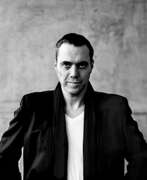

Ralf Kaspers is a contemporary German photographer.
He is attracted by monumental themes (nature, cityscapes, architecture) as well as ornamental microcosm consisting of countless combinations of identical small objects.
The constant change of themes and subjects allows the author to explore in detail the most important artistic categories such as form, texture and rhythm.
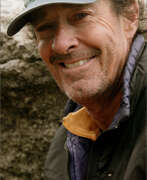

Robert Glenn Ketchum is pioneering conservation photographer, recognized by Audubon magazine as one of 100 people "who shaped the environmental movement in the 20th century."
Ketchum has had over 400 one-man and group shows, and his photographs are in major museum collections throughout the world.
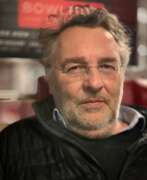

Richard Learoyd is a British photographer. He is known for his large-scale, camera obscura photographs that capture incredibly detailed, lifelike images of people and objects.
Learoyd studied fine art painting before transitioning to photography, and his work often blurs the lines between photography, painting, and sculpture. He constructs his own camera obscura by building a room and attaching a large, convex lens to one wall, which projects an upside-down image of the subject onto a sheet of photographic paper. He then uses traditional darkroom techniques to develop and print the final image.
Learoyd's photographs often feature portraits of friends and family members, as well as still lifes of everyday objects such as fruit, flowers, and animals. His work has been exhibited widely and is included in the collections of many major museums, including the Victoria and Albert Museum in London, the Getty Museum in Los Angeles, and the Museum of Modern Art in New York.
Learoyd has received numerous awards and honors for his photography, including a Guggenheim Fellowship and a commission to create a portrait of Queen Elizabeth II for the Diamond Jubilee of her reign.
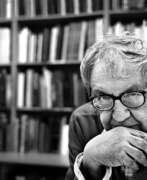

Saul Leiter was an American photographer and fashion photographer, one of the pioneers of what was later called the New York School of Photographers in the 1940s and 1950s.
Saul Leiter began doing color and black-and-white street photography in New York City in the 1940s. He had no formal training in photography, but the genius of his early work was quickly recognized. His main subjects were street scenes and his small circle of friends. Leiter made a huge and unique contribution to photography during his prolific period in New York in the 1950s. His abstract forms and radically innovative compositions have a painterly quality that stands out among the work of his New York School contemporaries. His sense of color and densely compressed urban life represents a truly unique vision of those times. Leiter is now considered a pioneer of early color photography and is noted as one of the outstanding figures in postwar photography.
For 20 years Leiter also worked as a fashion photographer and was published in leading fashion magazines.
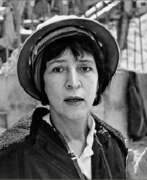

Helen Levitt was an American photographer known for her street photography of New York City. Levitt began taking photographs as a teenager and went on to work for the photo agency, the Photo League, in the 1930s and 1940s.
Levitt's work focused on capturing the daily lives of ordinary people, particularly children, in the neighborhoods of New York City. She used a small 35mm camera to take candid shots of children playing in the streets, creating images that were both playful and poignant. Her work was often compared to the work of fellow street photographers, such as Henri Cartier-Bresson and Walker Evans.
In addition to her photography, Levitt also worked as a filmmaker and created several acclaimed documentaries.
Levitt's photographs have been exhibited in major museums around the world, including the Museum of Modern Art in New York and the San Francisco Museum of Modern Art. She was awarded numerous honors for her work, including a Guggenheim Fellowship and a National Endowment for the Arts Grant.
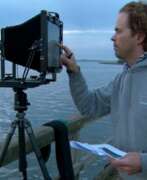

Florian Maier-Aichen is a German landscape photographer who lives and works in Germany and the United States.
He creates work using a combination of computer editing and traditional photographic techniques. The photographer alters huge landscape compositions with a series of staged effects, such as double exposures and light leakage, as well as computer and manual adjustments. Maier-Aichen's almost painterly landscapes are reminiscent of early photography and German Romantic painting. Florian Maier-Aichen's romantic, intellectual and ethereal photographs are closer to the realm of drawing and fiction than to documentation.
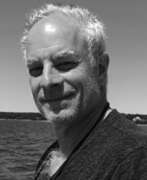

Russell Maltz is a conceptual sculptor, artist and photographer living and working in New York, USA.
Maltz creates work using a wide range of materials, from concrete cinder blocks, glass and clothespins to found wood panels, PVC pipes, paper and swimming pool; he collaborates with construction companies and enjoys photographing art-like industrial trash.
The artist paints the plywood panels in part monochrome and then assembles sculptural objects from them, with some parts visible and others hidden. Maltz also finds abandoned and unseen building materials, which he transforms into works of art with paint and minimal intervention.
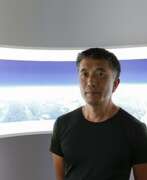

Hiroyuki Masuyama is a prolific artist and photographer renowned for his innovative approach to visual art. Masuyama's journey into the world of art began with his education in Tokyo, where he graduated from the Tokyo National University of Fine Arts and Music, and continued with further studies in mural painting at the Graduate School of the same university. He later expanded his academic horizons to include studies in Düsseldorf, Germany, where he now lives and works.
Hiroyuki Masuyama is celebrated for his intricate lightbox artworks that reimagine the landscapes and seascapes by renowned artists like J.M.W. Turner, offering a contemporary perspective on these classic scenes. His work involves a meticulous process of digital photography, where he captures thousands of images to recreate historical artworks or landscapes in a new light, essentially blending time, space, and medium. His projects, such as the detailed reinterpretation of Turner's journeys and the "Rome 1585-2012" solo show, showcase his commitment to bridging historical art with modern photographic techniques.
Moreover, Hiroyuki Masuyama has engaged in ambitious projects that document landscapes in a way that challenges traditional perceptions. His exhibitions, like "Nature" at Artoll Kunstlabor and "Mountain" at Merck Finck & Co., demonstrate his fascination with nature and historical sites, encapsulating them within the modern framework of LED lightboxes.
Hiroyuki Masuyama's work has garnered international attention, leading to exhibitions across Europe and Asia. His innovative use of technology to merge photography with painting invites viewers to explore the intersections of history, art, and contemporary media.
For collectors and experts in art and antiques, Hiroyuki Masuyama offers a unique blend of historical reverence and contemporary innovation. His artworks not only pay homage to the past but also challenge viewers to consider the ways in which modern technology can alter our perception of historical and natural landscapes.
Stay updated on Hiroyuki Masuyama's latest projects, exhibitions, and available works by signing up for updates from galleries and museums that feature his art. This subscription will ensure you are informed about new product sales and auction events related to Masuyama's work, offering insights into the fusion of traditional themes with contemporary art forms.
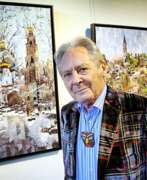

Serge Mendjisky, birth name Serge Bernard Mendrsisezky, is a French painter and photographer, a representative of Divisionism.
Serge was the son of the painter Maurice Mendjisky (1890-1951) and studied in the studios of Picasso, Sutin, Braque and Léger, each of whom influenced his work in their own way. After studying at the Paris School of Fine Arts, he quickly gained recognition and began exhibiting in Japan and the United States, choosing to use a combination of photography and painting.
In the 90's Mendjisky used macro photography, turning to pop art, and since 2000 he decided to use photography as his only means of expression. In the collage technique, he modified photographic images of the world's most famous cities, such as New York and Paris, creating new urban landscapes and formulating his multi-dimensional vision of the world.
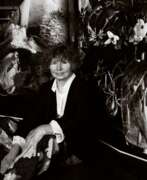

Vera Mercer is a German-born photographer who lives and works in France and the United States.
In the early 1960s she became part of the artistic avant-garde in Paris, which later became known as the "New Realists" (Nouveau Réaliste), photographing movie stars and avant-garde artists of the time. Later she found a new inspiration.
Mercer creates extraordinary large-scale photographic still lifes of food. With the right lighting and carefully chosen compositions of china, cutlery, fruit, seafood and game, Mercer's photographs resemble still lifes in the Dutch Baroque style. With burning candles and artful arrangements, the paintings, flooded with mystical light, are also a reinterpretation of classic vanitas motifs.
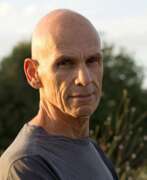

Joel Meyerowitz is an American street, portrait and landscape photographer and a pioneer of color photography. He lives and works in New York and London.
Meyerowitz became interested in color photography in 1962, when color photography was not yet considered serious art. There have been documentaries about him, and he is the author of 43 books, including one on the art of photography. Meyerowitz was the only photographer who received official permission to photograph the aftermath of the September 11, 2001 attacks in New York.
Meyerowitz continues to be an inspiration and a leader in photography today.
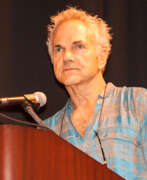

Richard Misrach is an American photographer. He is known for his large-scale color photographs of the American West, which often address issues related to the environment, politics, and social justice.
Misrach's work is characterized by his use of vivid colors, dramatic lighting, and wide-angle lenses, which emphasize the vastness of the landscapes he photographs. He often combines text and images to create complex narratives that invite viewers to reflect on their relationship to the natural world and to the social and political structures that shape it.
Some of Misrach's most famous series include "Desert Cantos," a collection of photographs of the American Southwest, and "Border Cantos," a collaboration with composer Guillermo Galindo that explores the U.S.-Mexico border.
Misrach's work has been exhibited in major museums and galleries around the world, and he has received numerous awards and honors for his contributions to the field of photography. He continues to produce new work and is widely regarded as one of the most important photographers of his generation.
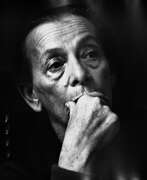

Stefan Moses was a German photographer living in Munich.
His documentary portraits of people and professions in West Germany (Germans) and later in East Germany (Farewell and Beginnings) made him accessible to a large audience. Moses took people out of their working environment and photographed them in front of a grey linen cloth — thus creating contemporary documents.
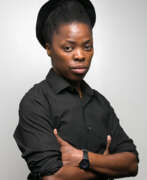

Zanele Muholi is a South African photographer and LGBT activist.
She works in the fields of photography, video and installation. Muholi's work focuses on race, gender and sexuality, with the bulk of her work documenting and celebrating the lives of black lesbians, gays, transgender and intersex people in South Africa.
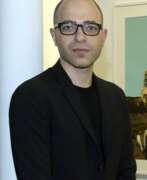

Youssef Nabil is an Egyptian photographer and artist living and working in Paris and New York. His work includes photography, painting, video and installations.
Nabil grew up in Cairo on films made during the golden age of Egyptian cinema, which strongly influenced his tastes. Nabil's distinctive technique of hand-colored silver-gelatin prints erases the stains of reality. Nabil shatters common notions of color photography and painting, as well as notions of the aesthetic sensibilities associated with art and pop culture.
Nabil is known for his photographs of Egyptian and international celebrities: Catherine Deneuve, Omar Sharif, Tracey Emin, Zaha Hadid, Robert De Niro and Marina Abramovic are just some of the many icons of the art and film world that Nabil has captured. Like all of his photographs, each portrait is made in the characteristic technique of hand-colored silver-gelatin prints. Nabil's numerous self-portraits reflect his feelings of loneliness, exile and longing. They also play with the notion of time. There is no time in Nabil's work; he lives and dwells in some other world of dreams.
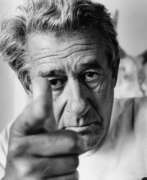

Helmut Newton (born Helmut Neustädter) was a German-Australian photographer. The New York Times described him as a "prolific, widely imitated fashion photographer whose provocative, erotically charged black-and-white photos were a mainstay of Vogue and other publications."
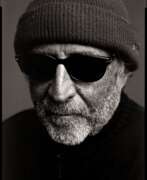

Jacques Olivar is a Moroccan fashion and advertising photographer and filmmaker.
In his youth he worked as a pilot of passenger air transport, but by the age of 40 he finally realized that photography is his vocation. And he became successful quite quickly. Since 1987, fashion photography has become his main profession. Jacques Olivar works for leading fashion magazines and has won many awards.
Emotion, elegance and beauty are the invariable key elements underlying Jacques Olivar's photographic works. The black and white images create an atmosphere of neorealism, while the color images seem to reference the heyday of cinema and build on the idea of the "American Dream".
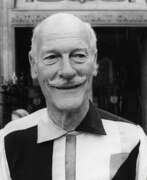

Norman Parkinson was a renowned British photographer who is considered one of the most influential fashion photographers of the 20th century. Parkinson began his career in the 1930s and continued to work until his death.
Throughout his career, Parkinson worked for numerous fashion magazines, including Vogue, Harper's Bazaar, and Queen. He was known for his use of vibrant colors and his ability to capture his subjects in dynamic poses and interesting settings. Parkinson's photographs often had a sense of humor and playfulness, and he was known for his ability to put his models at ease, resulting in natural and spontaneous photographs.
Parkinson's work has been exhibited in galleries and museums around the world, and he has been the subject of numerous books and documentaries. He received numerous awards throughout his career, including the Royal Photographic Society's Centenary Medal in 1985.
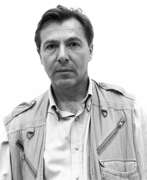

Robert Polidori is a Canadian-American photographer known for his large-scale color images of architecture, urban environments and interiors. His work has been the subject of solo exhibitions at the Metropolitan Museum of Art (New York), Musée d'art contemporain de Montréal, Martin-Gropius-Bau museum (Berlin), and Instituto Moreira Salles (São Paulo and Rio de Janeiro). His photographs are also included in the collections of the Museum of Modern Art (New York), New Orleans Museum of Art, J. Paul Getty Museum (Los Angeles), Victoria & Albert Museum (London), Château de Versailles, Centre Pompidou (Paris), and Bibliothèque Nationale (Paris), as well as many private collections.
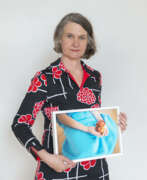

Judith Samen is a German photographic artist.
She studied at art academies in Münster and Düsseldorf and her works include photography, spatial installations, drawings, videos and performances.
Judith Samen's art moves between staging and the authenticity of human existence. Her work involves corporeality, food and elements of art history and everyday life. She formulates works between poetry and radicalism in her search for unseen and moving pictorial creations. She combines vulnerability and humor, transience and deep physical awareness with tragedy and comedy, in the process expanding the familiar into the absurd.
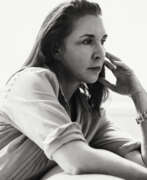

Laurie Simmons is an American artist, photographer and filmmaker. Since the mid-1970s, Simmons has staged scenes for her camera with dolls, ventriloquist dummies, objects on legs, and people, to create photographs that reference domestic scenes. She is part of The Pictures Generation, a name given to a group of artists who came to prominence in the 1970s. The Pictures Generation also includes Cindy Sherman, Barbara Kruger, and Louise Lawler.
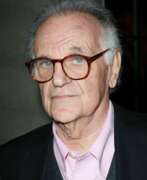

Bert Stern, real name Bertram Stern, is an American fashion photographer and documentary filmmaker.
His career began with the iconic and legendary Smirnoff Vodka advertising campaign in 1955. Using a well-equipped studio, Stern experimented with many of the latest techniques, including videotaping, screen printing, photo offset combinations and computer prints. His brilliant work made him a star in the advertising world, photographing advertising campaigns for Canon, Dupont, Pepsi-Cola, US Steel and Volkswagen brands. One of the high points of Bert Stern's career was working for Vogue in the 1960s.
Despite his drug addiction, the fashion photographer was sought after by Madison Avenue, Hollywood and the international fashion scene for decades.
Stern was one of the last photographers to shoot Marilyn Monroe in June and July 1962, six months before her death. Some of these photographs were published in Vogue magazine. In 1982, Bert Stern published The Last Sitting, a book that includes many of his more than 2,500 images, including those that Monroe did not like and were crossed out.
Stern directed and cinematographed the films Jazz on a Summer's Day (1959), A Date with an Angel (1987), and The Unknown Marilyn (2012).
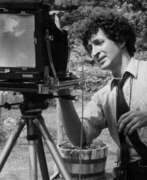

Joel Sternfeld is an American photographer. He is known for his large-format color photographs that capture the American landscape, as well as his documentary-style photography that explores cultural and social issues.
Sternfeld began his career as a photographer in the 1970s, and his first major project was "American Prospects," which he worked on for a decade. The project explored the changing landscape of America, from small towns to urban centers, and captured the impact of human intervention on the natural environment.
Throughout his career, Sternfeld has continued to produce compelling photographic projects that explore important social issues, such as the effects of globalization on communities, the aftermath of Hurricane Katrina, and the lives of inmates in prisons.
Sternfeld's work has been exhibited widely and is included in the collections of many major museums, including the Museum of Modern Art in New York, the National Gallery of Art in Washington D.C., and the San Francisco Museum of Modern Art. He has also received numerous awards and honors for his photography, including a Guggenheim Fellowship, a MacArthur Foundation Fellowship, and the Prix de Rome.


Beat Streuli is a Swiss visual artist who works with photo and video based media.
His photographs, videos and window installations have been exhibited in galleries and museums internationally. Permanent installations of his work include those at the Lufthansa Aviation Center, Frankfurt Airport, Germany, the ETH University, Zurich, Switzerland, the Style Company Building, Osaka, Japan, and the immigration hall of Dallas Fort Worth International Airport, Texas, USA.
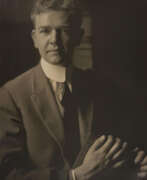

Karl Struss was an American photographer and a cinematographer of the 1900s through the 1950s. He was also one of the earliest pioneers of 3-D films. While he mostly worked on films, such as F.W. Murnau's Sunrise: A Song of Two Humans and Charlie Chaplin's The Great Dictator and Limelight, he was also one of the cinematographers for the television series Broken Arrow and photographed 19 episodes of My Friend Flicka.
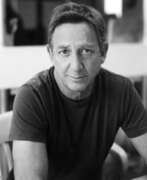

Larry Sultan was an American photographer and artist. He is known for his innovative and evocative photographic work that often explores the boundaries between documentary photography and staged narrative.
Sultan's work is characterized by his interest in the relationships between people and their environments, and he often incorporates everyday settings and objects into his photographs. He is perhaps best known for his seminal work, "Pictures from Home," which is a deeply personal exploration of his own family and their suburban life in Southern California.
Sultan's work has been exhibited in galleries and museums around the world, and he has received numerous awards and accolades for his contributions to the field of photography. He was also a highly respected teacher, and he taught photography at the California College of the Arts and other institutions for many years.
Sultan's legacy as an artist and photographer continues to influence new generations of artists. His innovative techniques and unique approach to photography have had a significant impact on the field of documentary photography, and his work remains an important contribution to the history of photography.
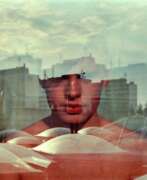

Nichole Velasquez is an American photographic artist.
He explores the detachment of color and form from their descriptive functions on analog film. His goal is to allow the emotional experience to take center stage in interpreting the work. Velázquez works with analog film, exploring emotional memories through the technique of multiple exposures. He worked with material scientists at the Technical University of Berlin to create silver plates, using mirrors as mediators for human color perception.
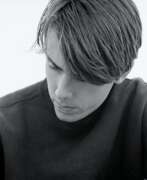

Chris von Wangenheim is a German fashion photographer and one of the most avant-garde image-makers of the 20th century.
In his relatively short career (1968 to 1981) Chris von Wangenheim created legendary images for all the leading fashion publications of the 70's including Vogue, Harper's Bazaar and Interview. He also created unforgettable ad campaigns for Valentino, Dior, Calvin Klein and Revlon.
At the height of his success, Chris died in a car accident in 1981 at the age of 39, leaving behind a tremendous legacy.
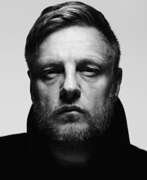

John Rankin Waddell, known as Rankin, is a British portrait photographer, fashion photographer, director, and publisher.
He works in fashion and portrait photography and has created portraits of many famous personalities of the world. Rankin also shoots music videos, documentaries, feature films, and commercials. He publishes his own photography magazines and books.
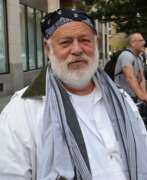

Bruce Weber is an American fashion photographer and occasional filmmaker. He has made ad campaigns for Calvin Klein, Ralph Lauren, Pirelli, Abercrombie & Fitch, Revlon, and Gianni Versace, and made work for Vogue, GQ, Vanity Fair, Elle, Life, Interview, and Rolling Stone magazines.
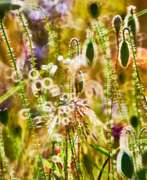

Matthias Zölle is a German photographer.
Matthias studied German language, journalism, political science and novel studies in Düsseldorf and Münster. After working in a newspaper, on stage, in the kitchen, in a wine bar and in a design office, he began to work intensively in photography in 1977 and since 1992 he has been working as an independent art photographer.
One of Zölle's main areas of work is dance art. Together with his camera, he accompanied the famous choreographer Pina Bausch and the Wuppertal Dance Theater, among others, taking a series of photographs.
